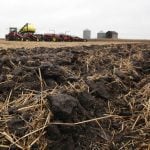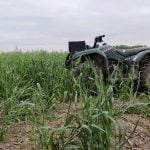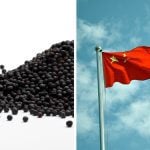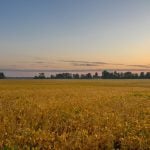When it comes to solving the challenges of developing countries, Bill Gates believes agriculture has a vital role to play.
In his annual letter for 2012, Gates, the founder of Microsoft and now a leading philanthropist through the Bill and Melinda Gates Foundation, called for an increase in research for seven major crops, all of which are developing countries’ staples: cassava, corn, millet, sorghum, yam, rice and legumes.
Despite the seemingly significant amounts of money invested in innovation in North America, agricultural research on the seven staple crops for developing countries has declined, to the point where $3 billion is spent per year (all figures US$).
Read Also

U.S. livestock: Cattle mixed on technicals, profit taking after tight supply rally
Chicago | Reuters – Chicago Mercantile Exchange cattle futures ended mixed on Wednesday as tight supplies and higher choice beef…
That total includes $1.5 billion by governments, $1.2 billion by private companies and the remaining $300 million by the Consultative Group on International Agricultural Research (CGIAR). Gates pointed out that the $300 million from CGIAR was specifically focused on research for developing countries; very little of the other 90 per cent made it to the countries that need it most.
Gates’ foundation has thus invested an additional $2 billion aimed at helping impoverished farm families to boost productivity in a sustainable manner, practice better land management and to make use of drip irrigation, and at finding ways for farmers to connect with viable markets.
"Right now, just over one billion people — about 15 per cent of the people in the world — live in extreme poverty," Gates wrote.
"On most days, they worry about whether their family will have enough food to eat. There is an irony in this, since most of them live and work on farms. The problem is that their farms, which tend to be just a couple acres in size, don’t produce enough food for a family to live on."
It’s a well-accepted notion than farming in North America is carried out by less than two percent of the population, Gates noted, but in developing countries, that number is much higher. In Uganda, 75 per cent of the population farms; in India, that number is 56 per cent and in Brazil, one of the key growth sectors in agricultural production (particularly soybeans), 21 per cent of the country’s population still farms. So there is something of a blind spot in Canada and the U.S., one that accepts the level of research into improved traits or pest or disease control as "sufficient" — at least for the purpose of North American agriculture.
And conditions in developing countries have improved, greatly. That 15 per cent of the world’s population living in extreme poverty is down from the 40 per cent of the population that was poor, 50 years ago. That was in advance of the "Green Revolution," when Norman Borlaug and other researchers developed new varieties and hybrids for wheat, rice and corn.
Combined with increased yields and falling prices, food intake in places such as East Asia jumped by as much as 50 per cent, saving lives and helping countries develop.
Much more remains to be done on the other side of the world, however, thus a substantial part of the $2 billion investment from the Gates Foundation is expected to go to specific initiatives — for instance, to improve resistance to Ug99, a pernicious stem rust in wheat.
Although researchers and breeders are working on the same issue in North America, the problem with Ug99 is at its worst in Africa, and it is moving into the Middle East and heading for India.
"Given the central role that food plays in human welfare and national stability, it is shocking, not to mention short-sighted and potentially dangerous, how little money is spent on agricultural research," Gates wrote.
Another area of interest for these funds is to help cassava farmers in countries such as Tanzania. Cassava is a staple for farmers, in that country and others. But in the past few years, production has been radically challenged by mosaic disease, which curls and withers the leaves of cassava plants, and brown streak disease, affecting the plant’s roots.
The crop is also important as a commodity for sale at markets, and as a potential export food product (dried to a powder, cassava is known as tapioca, which can be used as a substitute for wheat for those with celiac disease).
On top of agricultural research, the foundation is investing in global health issues, including vaccines for polio, AIDS research and education programs geared to family planning in developing countries.
There is also a provision for U.S. education, which the foundation said is meant to ensure all high school students graduate ready to succeed at higher levels, and that any graduate who wants to get a college or university education has the means to do so.
— Ralph Pearce is a field editor for Country Guide at St. Marys, Ont.















